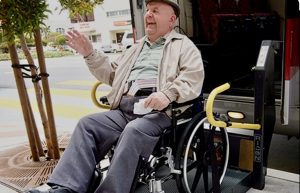In many cultures, an older person is regarded as a font of wisdom, someone that younger people can learn from. This too was the prevailing narrative in the US with its images of the elder statesman, grandparents as storytellers, sharing the family lore.
But in present-day culture, ageism – discrimination against older people – prevails in our entertainment, news media, the workplace, and most critically in health care.
The U.S. population in 2020 was older and had fewer children under age 5 than in 2010 or 2000, according to the 2020 Census Demographic and Housing Characteristics (DHC) data.
The baby boom generation (born 1946-1964) and millennials (born 1982-2000) — the two largest U.S. cohorts in 2020 — both continued to age over the past two decades. At the same time, smaller cohorts of children were born from 2010 to 2020.
Ethnic Media Services hosted a panel on age bias, California’s Master Plan on Aging, which has a section devoted to addressing ageism, and the 7 stages of Alzheimer’s. Surprisingly, people afflicted with the illness can continue to meaningfully participate in the workforce for several years during the first four or even five stages.
Louise Aronson, Professor of Medicine, Founder of integrative Aging practice, and Director, said COVID taught us how much age matters as older people died in higher numbers, though ethnicity played a critical role in mortality rates as well. So age isn’t everything, she says.
Age and race work together to either privilege or disadvantage individuals, says Aronson. At the same time, the age at which people consider “old” is rising while at the same time life expectancy, especially for vulnerable populations, is shrinking.
In the US, race and geography have a disproportionate impact on life expectancy.
“This isn’t about biology, it’s about social choices,” says Dr. Aronson.
Aronson says in medical education, people get several months for kids, a few weeks for older people and the rest is adults, even though a majority of people in hospitals are older. Aronson says there is not enough training to provide the type of care people in hospitals need.
Even in public health, older adults are lumped into a single category that is not based on science and the diversity that comes with various stages of aging.
Ageism is so baked into our lives that even people who care about diversity and inclusion leave out agism, says Aronson, adding that in medicine practitioners are not allowed to use words like senior though little is done to battle underlying stereotypes.



